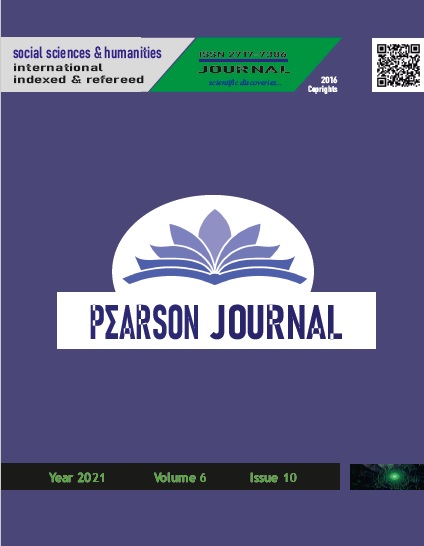AN INVESTIGATION IN TERMS OF CREAVITY OF THE PROBLEMS POSED BY 7TH GRADE STUDENTS BY USING STORYTELLING CARDS
DOI:
https://doi.org/10.46872/pj.214Keywords:
Mathematics education, problem posing, story card, storytelling cards, creativity, fluency, flexibilityAbstract
Creativity is one of the favorite concepts of the 21st century and it emerges as a concept that is used worldwide, especially by education systems, and is aimed to be determined and developed. Considering today's educational vision and missions, it is seen that almost every country attaches great importance to creativity. In this context, turning to the creativity activities used in mathematics education, the relationship between mathematical creativity and problem posing has emerged as a separate focus in recent years. When the national and international literature was examined, it was observed that most of the studies were carried out within the limits of quantitative measurement tools and in most of the studies the relationship between students' problem posing and creativity was measured with standard tests. Based on this, it is seen in the literature that there are limited studies that examine in-depth the relationship between students' problem posing and their creativity in a holistic manner. In this context, this study aims to examine the problems created by seventh grade students using storytelling (story) cards in terms of creativity. In this study, in which story cards were used as a semi-structured activity, qualitative research method was used to describe students' perspectives and creativity in problem posing in depth. The study group of this research consisted of 12 students studying at low and high achievement level in two public secondary schools in Tepebaşı and Odunpazarı districts of Eskişehir province in the spring semester of the 2018-2019 academic year. In determining the students for participating in the study, mathematics course grades were taken as a basis; considering the academic achievements of the students, two students from each school were selected for each success level, one male and one female at high, medium and low levels. Two story cards were used in the study, and each story card consists of six parts. In the study, the potential creativity of the students in the problems they posed was evaluated according to fluency and flexibility criteria, and two activities were examined together for the story activity. For the examination and determined criteria, the opinions of an expert in mathematics education and two experts in teaching mathematics to gifted students were consulted. With the expert opinion, it was decided to determine the fluency of the students 'problems with the "total number of math problems posed" and their flexibility by examining the distribution of the students' problems to different learning areas, using the criterion of "different sub-learning numbers". As a result, it was determined that the students posed at most 56 problems and at least 8 problems in problem posing activities with both story cards. From this point of view, since fluency is proportional to the number of problems, it can be concluded that fluency will increase as the number of problems that students pose increase. On the other hand, it was determined that while the number of different sub-learning areas in the problems that students pose was at most 7 different sub-learning areas in the problem-posing activity with both story cards, there were at least 2 different sub-learning areas. However, when the problem posing studies for both activities are examined separately, the sub-learning areas of the problems established are "Equality and Equation, Measuring Length and Time, Operations with Fractions, Operations with Natural Numbers, Percentages, Time Measurement, Data Analysis, Operations with Integers, Ratio-Proportion, Algebraic Expressions" spectrum. In addition, it was determined that the students mostly posed problems in the "Operations with Fractions" learning area. In this context, since the different sub-learning areas in the posed problems are proportional to the flexibility, it can be concluded that the more the students turn to different sub-learning areas in their problems, the flexibility will increase in parallel. Within the scope of research proposals, problem posing applications such as story cards and story cube can be included in the textbooks, and creative problem posing activities in classrooms can be performed.




